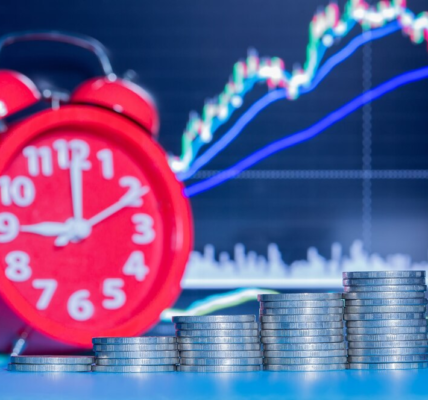In the exciting world of cryptocurrency trading, strategies like short selling can be powerful tools for traders looking to capitalize on market movements. The question on many investors’ minds is: “Can you short crypto on Coinbase?” In this article, we’ll explore whether Coinbase supports shorting crypto, dive into how it might be possible, and provide some insights into the broader implications of shorting digital currencies.
What is Short Selling in Crypto?
Short selling, also known as “shorting,” is the selling of an asset that the seller does not own, relying instead on the assumption that its price will decrease in the future. This basically entails borrowing a certain asset, for example, a cryptocurrency, and selling it off at the current market price with the hope of rebuying the same asset later at a lower price. The main objective of short selling is to gain profit in the reduction of value of the asset.
Mechanism of Short Selling
The following are the common and system rules guiding short selling in the cryptocurrency market:
- Borrowing the Asset: The trader borrows the required crypto from a broker or an exchange. This may involve paying some fees on the borrowed asset.
- Selling at Current Price: Instantly after borrowing the asset, the trader proceeds to sell it at the market price that is prevailing. This will establish a sort of position in the asset.
- Buying back at lower price: In this case, a trader keeps an eye on the market, anticipating a drop in price. When a desirable level is finally reached, an equal amount to that which has been borrowed in the form of cryptocurrency is then bought back.
- Returning the Asset: Finally, at the end of the stipulated time, the trader returns the borrowed cryptocurrency back to the lender and thereby concludes the short-selling transaction.
Goal of Short Selling
The goal of short selling in the crypto market is to take the difference that exists between high-selling prices and low-buying prices. The objective is to profit from the decrease in asset value that they expect would occur. This is more helpful when the bearish market condition arises and prices take a downturn.
Can You Short Crypto on Coinbase?
The current Coinbase doesn’t allow for traditional short selling right on the platform. The company is considered a top-ranking name of the industry in crypto exchanges and mostly focuses on a highly secure and user-friendly environment to purchase, sell, and store digital currency. All those traders willing to speculate on price falls do have some alternative products offered at Coinbase or its advanced trading platform, Coinbase Pro.
Indirect Ways to Speculate on Price Drops on Coinbase
While Coinbase does not provide its customers with a shorting feature, traders can actually apply other techniques that would essentially allow them to profit from the decline in prices.
| Investment Method | Description |
| Margin Trading | Coinbase Pro is actually an accompanying professional trading platform that offers margin trading services from Coinbase. In actual fact, with Coinbase Pro, traders can actually be able to get borrowed funds, increase their buying power, and hence are able to open larger trades, therefore having bigger potential profits in times of price declines. |
| Derivative Products | Coinbase itself doesn’t offer derivative products such as futures or options contracts. However, traders can find other platforms that offer such derivatives for speculation on the movement of cryptocurrency prices without actually owning the coins. |
| Short ETFs or Funds | While Coinbase does not provide short ETFs or funds by itself, considering the fact that the investor is capable of finding such a platform or fund that specializes in shorting cryptocurrencies, eventually it provides a way for him to profit indirectly from falls in the prices of the cryptospace. |
| Inverse Exchange-Traded Products | Some of these exchanges also list inverse ETPs that track the inverse performance of certain cryptocurrencies or indices. The ETP allows traders to benefit from a price drop without necessarily deploying short-selling methods. |
Considerations for Shorting Crypto on Coinbase
What a trader might have in mind while looking for an indirect method to speculate on the drop in price of something could include:
- Risk Management: As for shorting cryptocurrencies, it involves inherent risks, such as unlimited losses when the price of an asset shoots up out of the blue. In light of this fact, therefore, traders will need to implement strategies that can help them manage such risks, including stop-loss orders and position size.
- Market Volatility: Cryptocurrency is, without doubt, a highly volatile asset, and the market can turn at any given point of time. Traders have to make sure that they have checked market conditions through and through and done their investigation well before they plunge into short positions in order not to fall prey to risks associated with volatility.
- Regulatory Considerations: The trader must take into consideration the regulatory issues pertaining to short selling and derivative trading in the cryptocurrency market, as this may vary on a jurisdiction basis.
Alternative Methods on Coinbase

These ways are not for Coinbase users to do things in an old, set way. Coinbase does not actually support short selling by themselves; instead, traders would be able to try other platforms and products to get the same result. This will be looked into with more detail in the sections that follow.
Coinbase Pro
Features of the advanced trading platform, Coinbase Pro, whereby the functionality indirectly replicates the effect of short selling through some of its functions. They include:
- Margin Trading: Trading with a margin is also possible on Coinbase Pro. That is to mean, a trader can borrow money from the exchange if he so wishes, so that he can “gear up” his trading position. Besides, margin trading does not involve traditional short selling, but traders have the leverage to mimic the effects of short selling, whereby they sell the cryptos upon borrowing money and then buy them back at lower prices in order to pocket the difference in price.
- Advanced Order Types: Coinbase Pro supports a full range of advanced order types, including limit, market, stop, and trailing stops. This will allow you to use order types that allow short-like strategies. For instance, you will be able to set stop orders for automated selling of assets at some price to derive benefits when the prices keep falling.
Crypto Derivatives
Although not directly offered through Coinbase, would be likely to be available to traders through derivative products related to the platform or even those offered in conjunction with Coinbase. Such derivative products enable the operation to be as short as possible and include:
- Futures Contracts: On some cryptocurrency exchanges, futures contracts are contracts either of selling or buying a stated cryptocurrency at an agreed price in the future. When selling futures contracts, a trader can take short positions and speculate about the decrease in prices, meaning he or she can make a profit only if the price of the underlying asset has decreased.
- Options Contracts: Options contracts give the trader the right to buy or sell the particular cryptocurrency at a fixed price within a given period of time. Traders may as well buy a put option contract allowing the put buyer the right to sell off the cryptocurrencies at the determined price, consequently exposing speculative short trades.
Considerations for Utilizing Alternative Methods on Coinbase
Before you start considering the other ways in which to speculate on price declines, here are a few pointers the traders should have in mind:
- Risk Management: Margin trading and derivative trading imply inherent risks, which can even lead to colossal losses for the traders. One has to be very meticulous about the kind of risk exposure they have by putting strict stop-loss orders, looking over the leverage with effectivity, and diversifying the modes of their trade.
- Regulatory Compliance: The trader must have due regard to compliance with all applicable regulations while carrying on trading in margin, futures, or options contracts. Regulatory requirements do vary from one jurisdiction to the other, and hence traders are to familiarize themselves with applicable laws and regulations.
- Market Analysis: Successful trading strategies should be based on thorough market analysis and research. Traders undertake market analysis before going to the market, which covers the trend, sentiment, and fundamental factor side. This helps them to make a well-informed trading decision seeking short opportunities in the market.
Understanding Margin Trading
Found on platforms like Coinbase Pro, margin trading is one of the advanced options when trading. It effectively allows a trader to increase their potential investment exposure by borrowing funds. Though margin trading offers higher potential gains, it, of course, naturally comes with the risks relating to this kind of advanced trading, akin in nature to mechanics used in short selling.
Key Features of Margin Trading
Margin trading on Coinbase Pro encompasses several key features that traders should understand:
- Leverage: A huge feature when it comes to margin trading is leverage; this just helps traders to take control of big positions with very minimal capital amounts. For example, at 2:1 leverage, the trader controls $2 worth of assets for every $1 of their own capital. In other words, leverage simply means using borrowed capital in such a way as to make higher returns than would have been feasible with only one’s own capital, but hence also multiplying the potential return on investment by a corresponding factor, and of course, the potential risk of loss.
- Borrowing of Funds: Margin trading would, therefore, be borrowing from other traders on the exchange, thus giving users the privilege to leverage their trading capital. Hence, payment of interest on the borrowed fund adds up to the cost of doing business when funds are borrowed by the traders. Traders, therefore, have access to and can hold larger positions than they would afford through their own capital, hence making it possible to make bigger profits.
- Potential for Higher Returns: The major attraction of margin trading is to multiply the return from investment. If the trade is moving in the right way, then the potential for magnified profits using leveraged borrowed funds for the trader remains limitless. The amplifying effect causes traders to realize higher profits compared with those who would have traded by their own capital. However, it’s important to mention that the risk is just as much amplified as the potential gain.
Risks Associated with Margin Trading
While margin trading offers opportunities for enhanced returns, it also entails significant risks that traders must carefully consider:
- Higher Potential for Significant Losses: The use of leverage in margin trading amplifies both gains and losses. While traders can potentially multiply their profits, they can also face substantial losses if their trades move against them. In volatile markets, the risk of significant losses is particularly pronounced, as price movements can be rapid and unpredictable.
- Margin Calls: Margin trading requires maintaining a minimum margin level to avoid margin calls. If the value of a trader’s positions declines and their margin falls below the required level, the exchange may issue a margin call. A margin call requires the trader to either deposit additional funds into their account or close out positions to cover potential losses. Failure to meet a margin call can lead to liquidation of positions by the exchange.
- Liquidation Risk: If a trader fails to meet a margin call or maintain the required margin level, their positions may be liquidated by the exchange to cover outstanding debts. This can result in the loss of the entire margin and potentially even more than the initial investment. Liquidation risk is a significant concern for margin traders, particularly in volatile markets where price swings can be extreme.
Risks Associated with Short Selling Crypto

Short selling is not without its risks, particularly in the unpredictable crypto market. Here are a few risks to consider:
Volatility
Cryptocurrencies are notorious for their extreme price volatility. Price swings of 10% or more within a single day are not uncommon. Such volatility can pose substantial risks for short sellers, especially if prices unexpectedly surge.
| Risk Factor | Impact on Short Sellers |
| Volatility | Sharp price increases can lead to significant losses for short sellers. |
The unpredictable nature of cryptocurrency markets means that short sellers must constantly monitor price movements and be prepared to adjust their positions accordingly. While volatility can present opportunities for profit, it also increases the likelihood of substantial losses if short positions are not managed effectively.
Regulatory Changes
The regulatory landscape surrounding cryptocurrencies is constantly evolving. Governments and regulatory bodies worldwide are continuously issuing new guidelines and regulations that can impact the market sentiment and, consequently, the price of cryptocurrencies.
| Risk Factor | Impact on Short Sellers |
| Regulatory Changes | Changes in regulations can lead to sudden price fluctuations, affecting short positions. |
Uncertainty regarding regulatory compliance and potential future regulations can create significant challenges for short sellers. Sudden changes in regulatory policies can lead to increased market volatility and may result in substantial losses for those holding short positions.
Market Manipulation
Due to the relative infancy and lack of regulation in the crypto market, it is susceptible to manipulation by large players or groups. Pump and dump schemes, spoofing, and other forms of manipulation can artificially inflate or deflate prices, causing significant losses for short sellers.
| Risk Factor | Impact on Short Sellers |
| Market Manipulation | Manipulation can distort market prices, leading to losses for short positions. |
Market manipulation can be particularly problematic for short sellers, as artificially induced price spikes can trigger margin calls or force the closure of short positions at unfavorable prices. Traders must remain vigilant and be aware of potential manipulation tactics to mitigate these risks.
Mitigation Strategies
Despite these risks, there are strategies short sellers can employ to mitigate their exposure:
- Diversification: Avoid putting all your capital into one short position. Diversifying across different cryptocurrencies can help spread risk.
- Stop-Loss Orders: Implement stop-loss orders to automatically close out short positions if prices move against you beyond a certain threshold, limiting potential losses.
- Stay Informed: Keep abreast of regulatory developments and market trends to anticipate potential price movements and adjust your short positions accordingly.
Conclusion
While the answer to “Can you short crypto on Coinbase?” is technically no in terms of traditional short selling, there are alternative strategies that investors can use on Coinbase Pro to capitalize on downward price movements. Understanding these alternatives, along with the associated risks, can help traders make more informed decisions in their trading strategies.
By considering these elements carefully, investors can navigate the complexities of crypto trading on platforms like Coinbase and Coinbase Pro. Whether you’re looking to speculate on price declines or simply explore the functionalities of crypto trading platforms, it’s crucial to stay informed and cautious in your trading approaches.
FAQ
A1: Coinbase aims to keep the platform simple and user-friendly, focusing on buy and hold strategies rather than complex trading tactics.
A2: Yes, Coinbase Pro offers tools like margin trading that can be used for trades analogous to shorting.
A3: Direct shorting is not possible on Coinbase for any cryptocurrency. However, traders can use margin trading on Coinbase Pro for similar effects.
A4: If the market price rises instead of falling, short sellers could incur substantial losses, especially in margin trading where losses can exceed the initial investment.








